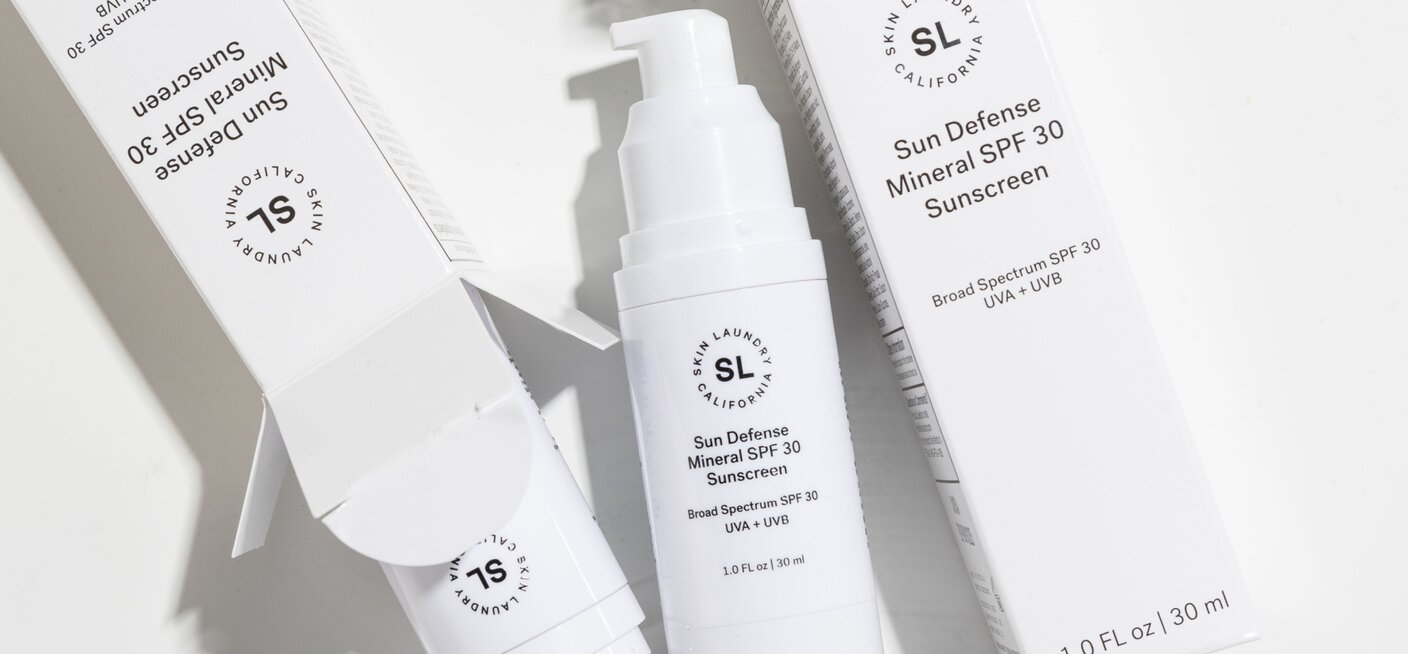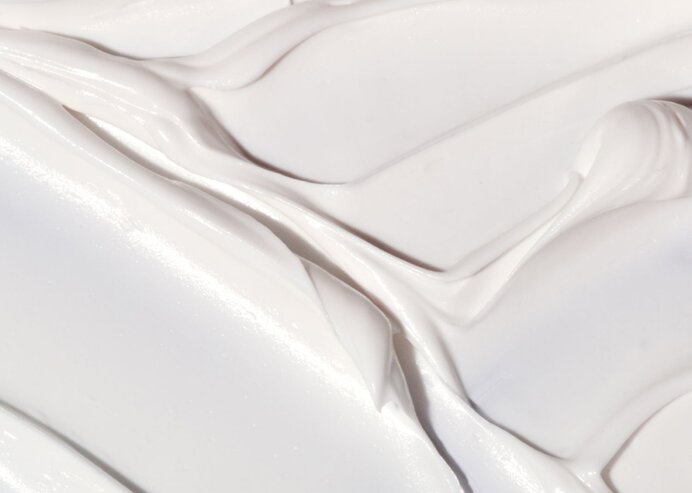
INGREDIENTS
All About Sunscreen and Sun Safety
A deep dive on SPF, sunscreen terminology and best sun protection practices.
We all know (or if you didn’t, now you do) that protecting your skin from UV rays is key to healthy skin and daily use of sunscreen is non-negotiable. Sounds simple, but there’s a lot of jargon that surrounds sunscreen - think SPF, broad spectrum, UVA, and UVB, among other vital terms to practice safe sunning. Here, we break down how the sun can harm our skin and the best way to protect it.
Read on for our Skin Laundry guide to sunscreen and sun safety.
What is Sunscreen?
Sunscreen is a topical product that helps protect against sun damage by either absorbing or reflecting ultraviolet (UV) radiation. Ultraviolet radiation is a type of energy produced by the sun and is made up of two types of rays: UVA and UVB.
While exposure to sunlight has multiple benefits, including enabling your body to make vitamin D, which strengthens your bones and regulates your immune system, it also increases your risk of skin cancer. It’s estimated that about 80% of skin’s aging is caused by sun exposure. Wearing sunscreen is, therefore, the best–and easiest–way to protect your skin.
What is SPF?
SPF stands for “sun protection factor” and the number beside it indicates how well the sunscreen protects skin against sunburn. SPF is not an indicator of how long you can stay out in the sun, but how much longer it takes to produce sunburn on SPF-protected skin versus unprotected skin. As the SPF value increases, the sunburn protection also increases, so for instance, if you’re wearing SPF 30 it would take 30 times longer to burn than if you were not wearing any sunscreen.
No matter how high the SPF, UV radiation can always get through to the skin, however, so no sunscreen can ever completely prevent sunburn and the associated skin damage. Additionally, SPF only measures how well the sunscreen protects skin against UVB radiation, not the deeper penetrating UVA. To protect against both UVB and UVA radiation, you need a broad spectrum sunscreen. The Skin Cancer Foundation recommends a water resistant, broad spectrum sunscreen with an SPF of 30 or higher for any extended outdoor activity.
SPF also needs to be applied properly to work effectively. The Skin Cancer Foundation recommends applying a quarter to a third of a teaspoon to your face and neck and two tablespoons to your body 30 minutes before going outside, and reapplication every two hours or immediately after swimming or sweating.
What are UVA and UVB Rays?
Ultraviolet light is invisible to humans because it has shorter wavelengths than the light we can see. Within the UV spectrum are two types of rays, Ultraviolet A (UVA) and Ultraviolet B (UVB), each of which penetrates your skin differently.
UVB has a shorter wavelength and is associated with skin burning. UVA has a longer wavelength and is associated with skin aging. There are also two types of UVA rays: UVA1 and UVA2.
UVB penetrates and damages the outermost layers of skin. UVA rays, while slightly less intense than UVB, penetrate the skin more deeply.
UVB intensity fluctuates and is strongest late-morning to mid-afternoon and can damage your skin year-round, especially at high altitudes or on reflective surfaces like snow or ice. UVB rays can be filtered and do not penetrate glass.
UVA, meanwhile, accounts for up to 95 percent of the UV radiation reaching the earth and maintains the same level of strength during daylight hours throughout the year. UVA can also penetrate windows and cloud cover.
What are the different types of Sunscreens?
There are two types of sunscreens: chemical and physical. Chemical sunscreen absorbs UV rays, converts them into heat, and releases them from the body. Physical sunblock sits on top of the skin and reflects UV rays.
Chemical Sunscreen
Chemical sunscreens contain active ingredients such as Avobenzone, Homosalate, Octinoxate, and Oxybenzone. Chemical sunscreens are usually easily absorbed by the skin and are often clear, making them more wearable. However, they also wear off more quickly and need to be reapplied every couple of hours.
Mineral (aka Physical) Sunscreen
Mineral sunscreens, also called physical sunscreens, are mainly composed of Zinc Oxide and Titanium Dioxide.
Zinc Oxide can protect against the entire UVA range and some UVB. Titanium Dioxide can protect against UVA2 only and UVB.
The Food and Drug Administration, which governs sunscreen safety in the US, has found that only two ingredients, Zinc Oxide and Titanium Dioxide, are safe and effective, based on information currently available.
Twelve other ingredients, including the most popular ones found in chemical SPFs like Avobenzone, Homosalate, and Oxybenzone, were not generally recognized as safe and effective due to insufficient data.
The American Academy of Dermatology recommends the following when choosing a sunscreen:
1. Make sure the label says “broad spectrum.” The words broad spectrum mean that the sunscreen will protect your skin from both UVA and UVB rays.
2. Use an SPF 30 or higher, which can block about 97 percent of UVB rays.

Doctor's Note
Our new Sun Defense Mineral SPF 30 Sunscreen is formulated with Zinc Oxide and provides broad spectrum protection from the sun's harmful UV rays without leaving a white residue or sticky feel on the skin.
Aside from offering safe, broad SPF, physical sunscreens containing Zinc Oxide have several other benefits. Zinc Oxide has anti-inflammatory properties, making it ideal for those with sensitive skin and skin conditions such as eczema and rosacea.
For those prone to melasma or hyperpigmentation—both conditions can be triggered or worsened by the heat and light of the sun’s rays—unlike chemical sunscreens, which work by absorbing into the skin where they convert the UV rays into heat, then release that heat from the skin. Whereas physical sunscreens block UV light from penetrating the skin without producing heat.
Shop our line of dermatologist-approved skincare in-store.
Additional Reading
Your Shopping Bag
Your shopping bag is empty










